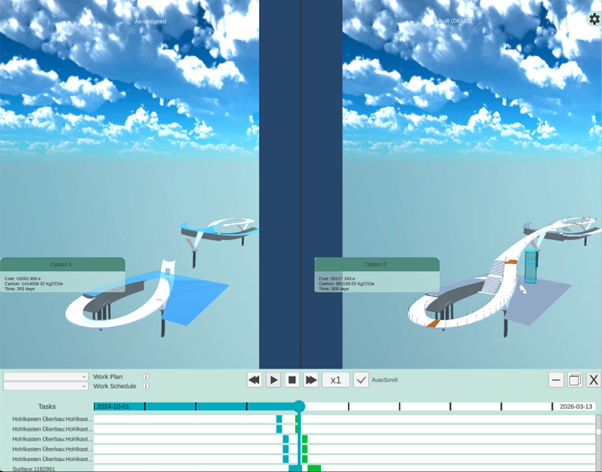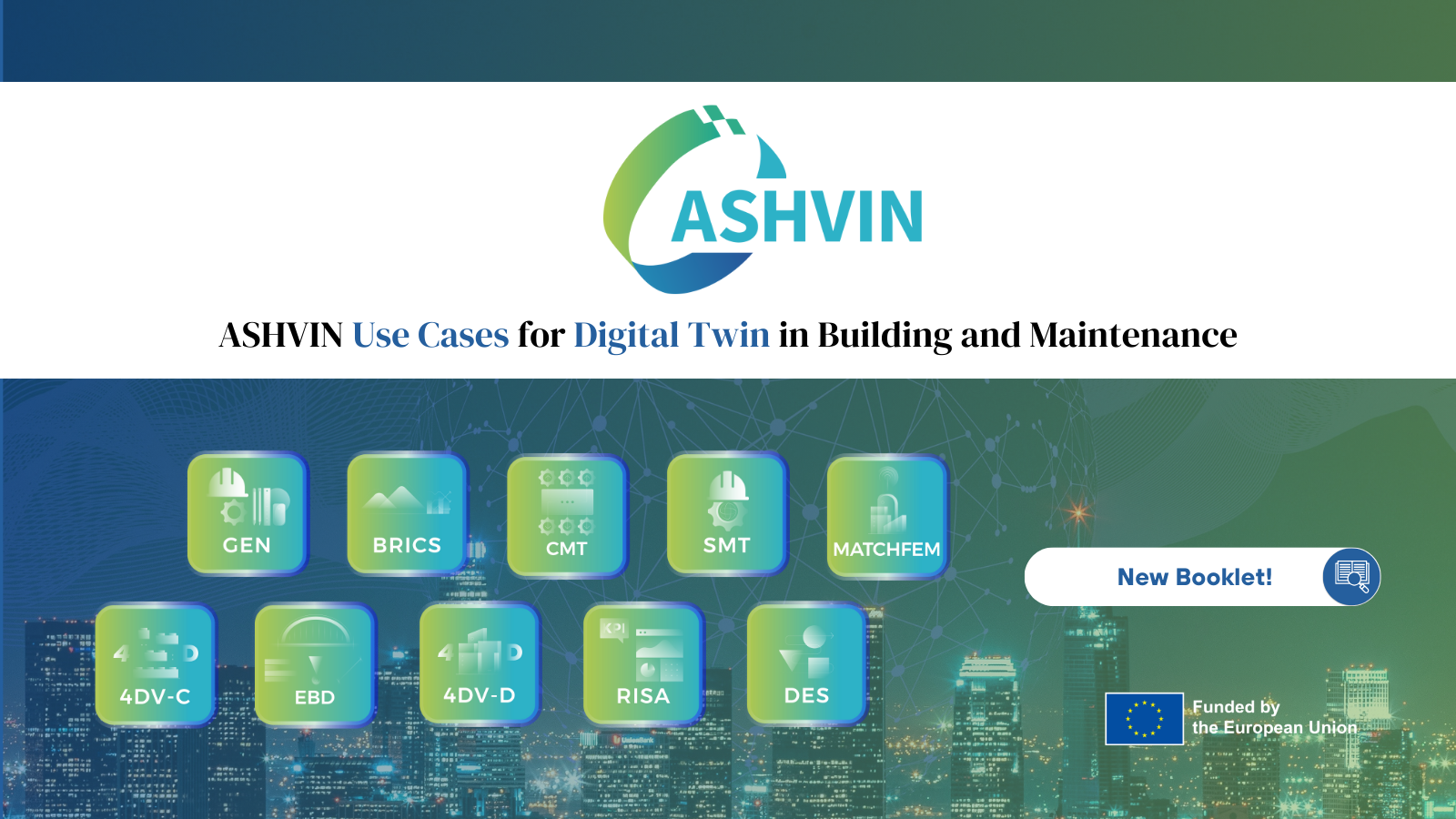ASHVIN’s digital twin supports architects, engineers, and planners in creating high-quality, accurate digital representations of construction projects. This allows for better design optimisation and supports informed decision-making during early-stage planning. The objective is that these better-designed civil engineering projects enhance productivity in project design while improving safety and resource allocation using BIM techniques and data collected from similar construction and infrastructure sites.
Moreover, the design phase determines the path to success in every construction project. Yet, overcoming challenges such as budget constraints, coordination complexities, evolving requirements, technological adoption, regulatory compliance, and sustainability considerations is important for a smooth and successful design process.
The novel ASHVIN system is composed of a smart digital application toolkit. These tools are integrated into a digital twin platform, enabling visualisation of the collected data. This system was created and piloted in the ASHVIN project, a European research effort run by 15 partners for 3,5 years until March 2024.
The project has developed four digital tools to create and analyse digital representations of construction projects during the design phase. These tools involving real-world data collection and analysis have been demonstrated at two pilot sites. The ASHVIN partners have shared their research results on digital twins for design in its podcast episodes and scientific publications.
A set of ASHVIN Tools for Design
The ASHVIN team has developed and piloted four digital twin tools supporting construction projects’ design and engineering phases.
Check out our tutorial videos of the developed tools for the design phase:



Two pilot sites test the digital twin tools for design
The ASHVIN design toolkit has been piloted in a footbridge design project in collaboration with the city of Dortmund in Germany (Demo site #8). Within the framework of this pilot site, an already existing project database has been expanded into a comprehensive knowledge database of footbridge projects. It contains data, experience and knowledge from previously implemented footbridges. The data was filtered according to project-relevant performance and key performance indicators (KPIs), i.e. safety, productivity, costs and resource efficiency, and thus serve as an orientation aid, as a benchmark, in the design process that has been successfully finalised. ASHVIN partner, Schlaich bergermann und partner (sbp) from Germany, manages this research task.

Visualisation of the 4DV-D tool at the footbridge demonstration site in Germany

Visualisation of the GEN tool at the footbridge demonstration site in Germany
The second demo site piloting the design tool is located in Gdynia, Poland, and it supports the design of the renovation process of an existing building (Demo Site #2). Our partner, Fasada, led the renovation project and demonstrated how to develop a digital twin that accurately describes the building’s energy behaviour. Thanks to the research carried out at this site, the ASHVIN solution will be able to provide precise digital twin information of existing buildings as a baseline for better planning of the renovation process.


Discover more about our research on digital twins supporting the design phase!




The ASHVIN’s scientific partners continue to spread their research results across international academic journals and conferences. Several publications present our work related to the digital twin technologies for the design phase!
A real-time discrete event simulation tool for data-based construction management, presented at EG ICE 2023 Conference.
Combined Digital Twin and Location-Based Management System,Presented at IGLC 2023 conference

Several related public deliverables are available in our online library, especially these that are related to the deployment of the digital twin tools for the design phase:
Deliverable 2.1 – A set of KPIs to design for productivity, resource efficiency, and safety
Deliverable 2.2 – Evaluation and recommendations for evidence-based design for productivity, resource efficiency, and safety based on historical digital twin data
Deliverable 2.3 – Parametric design to optimize productivity, resource efficiency, and safety during early design stages
The ASHVIN team working behind the design phase






